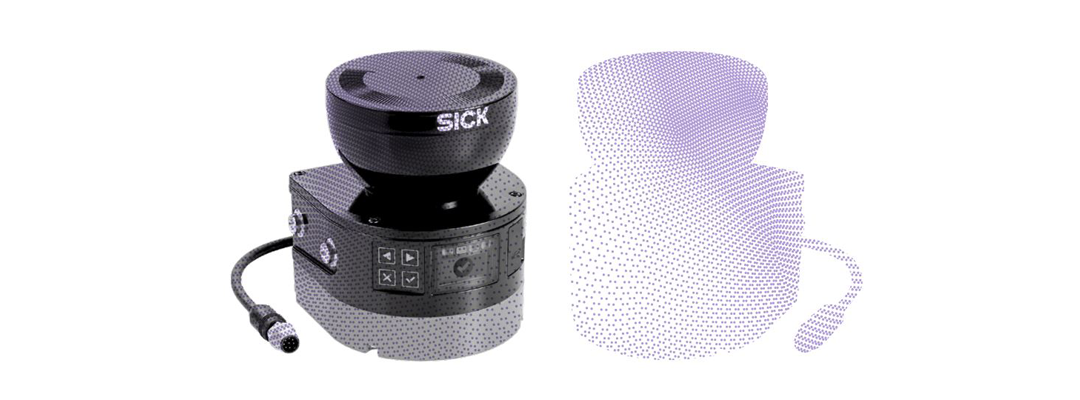
Magazine for the Annual Report
Digital sensor twins

While the concept of the ‘metaverse’ as the virtual parallel world of the future is doing the rounds, it has long been reality in the industrial environment. Digital engineering is the name of the process that creates virtual production plants before they are actually constructed on the shopfloor.
This offers clear advantages: Significantly shorter construction times, state-of-the-art technology, precisely adjusted plants, and rapid commissioning. In the process sensors take on a special task: “Intelligent sensors get the plants and robots moving. They measure, inspect certain patterns or materials, and process data so that operative steps can be set up efficiently and individually.
We have developed the first generation of digital sensor twins to ensure that this versatility can be integrated during the early planning phases of the future plant,” explains Samir Belgharda, Technical Industry Manager. Plant designers can already use the digital twin during an early phase of the engineering process to test which sensor is the right one for the future application.
Virtual commissioning offers new possibilities
The first digital sensor twins from SICK form the basis for a growing portfolio of virtual sensors. 2D or 3D models of sensors are currently standard. The aim now is to develop the digital twin as a 4D CAD model in the future, and make it available to plant designers. Samir Belgharda gives an example: “We have already created virtual depictions of our safety laser scanners. Our laser scanners play an important role in plant safety: Their scanning fields detect the surroundings of a plant. They switch off the plant when a person or object comes too near. The protective fields must be precisely parameterized to ensure that they do not switch off the plant too early or too late. In the past, the inputting of these settings could only be undertaken on the standing machine itself – this was time-consuming and not without its dangers. Our virtual sensor models now open up the possibility of carrying out configuration during the phase of virtual commissioning.“
The virtual simulation of plant processes prevents time-consuming post-adjustment during plant construction. Simulating errors and taking the control logic into account allows a variety of scenarios to be digitally mirrored and trained for. Another advantage of digital engineering is the contemporary nature of the installed components and software solutions. “By using digital twins of all the plant’s components we can drastically shorten the time required for a plant to start operation. Nevertheless, years may pass between starting on the planning and the first productive throughput. So what may have been stateof-the-art when the planning started could already be outof-date two years later. This, however, is not a major problem in the virtual world: The designer can flexibly adapt the plant to the latest state of the technology.”
Bridges to the future
But Samir Belgharda and his team want still more than this: “We want to create a bridge between virtual commissioning and actual commissioning. In future it should be possible to transfer all the configurations and specific settings from the virtual engineering to the plant control system for real use. We would thus take enormous steps towards achieving plug&play solutions for commissioning large plants. This is a milestone for the digital transformation in industrial automation.”







